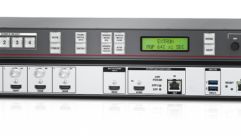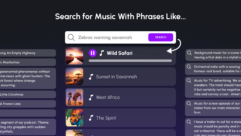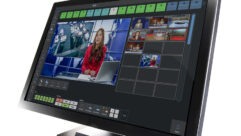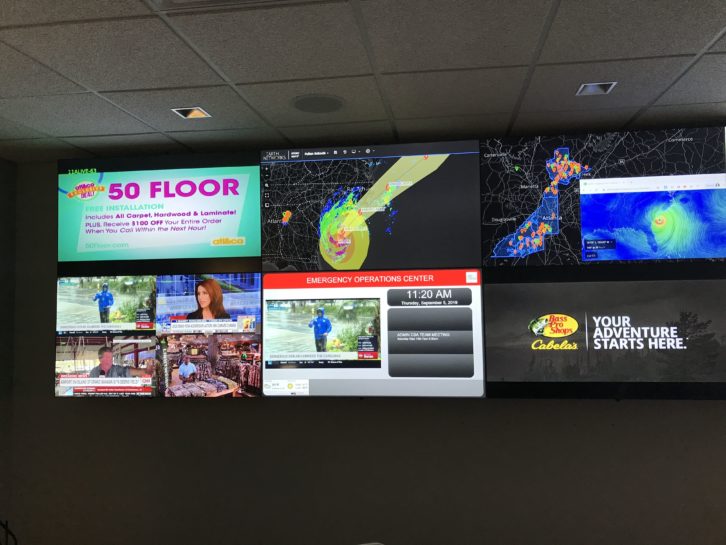
Emergency has taken on a new meaning in these times. When Fulton County Schools in Atlanta called in Nisewonger AV to upgrade their Emergency Operations Center, the goal was to have a command center level EOC powered by AV over IP. Adam Yates, who was recently promoted to VP of Business Development at Nisewonger AV, is here to give us the story.
SVC: Before we start talking about this project, I’ve been asking everybody recently about the effect of the pandemic on their business.
Adam Yates: It’s been okay. We certainly have seen some effects, some immediate effects. Toward the end of March, we stayed with a light crew. About mid-March to the end of March we shut things down – shut our physical office location down. Around the first of April, for about two or three weeks we were having people work from home. My installers actually took advantage of some AVIXA online training courses. There’s never a great time to stop and do that, so we were able to take advantage of that time. At the time the pandemic hit, we had jobs ready to roll–so it was just kind of a halt. We had to take a time out. Then about two to three weeks ago we started trying to get back into the swing of things. My installers came back in. We took all the safety precautions. They have to wear masks and gloves and such onsite. But they’re hanging in there and we’re getting some of the projects done that we had in the pipeline to get completed.
So it’s looking like now it’s time to hit the road again.
That’s right. We were itching to get back to it. My wife and I, we were operating the business from our home and homeschooling our kids [Laughs] – running a business and running a home. That was a challenging experience, but it was one that we won’t forget and we’re glad to be on the other side of it. Of course there are going to be some lasting effects, I’m sure, even down to the education market. We were blessed to be involved in and working off of this year’s budgets and fulfilling some of the projects that we had in line. We were just anxious to get back and get some equipment and get some projects installed and completed because everything was just kind of sitting here. The summer’s going to look a little bit different and heading to the fall, no one’s quite sure how that’s going to shake out. But we’re staying positive and staying optimistic about the future.
Nisewonger AV has always been a leader in the education AV market and well-known in these parts. Last summer we had a great talk about your project with the Hall County School System and now the Fulton County schools, I think the fourth largest system in the state, has called you in. They wanted their Emergency Operations Center redone and so what exactly did they need there?
They really needed a scalable system. They had a system in place. They had several monitors kind of configured in a video wall-type format; however, they weren’t specific video wall monitors. They had a kind of HDMI matrix system in place, which was maxed out. They needed to add additional displays. We came in and utilized some of the existing audio systems, but as far as the video was concerned, we turned it on its heels and went with an AV over IP-based system created by Just Add Power. This was the right scalable solution in that environment. I mean, this gives you the opportunity to add transmitters and receivers, as many as you can count, without having to change the infrastructure once it’s in place. We’re operating that off of a simple managed AV network switch that can be as big as you want it to be and you can add to it. Additionally, they really needed the capabilities to create a true video wall experience.
You replaced all the displays they had with 55-inch LG commercial video wall displays?
Yeah, we did. They had kind of a conglomerate of displays there. They were more consumer-type displays so the bezels were thicker. When we started talking about upgrading to a true video wall experience we went to LG for their commercial displays with the ultra-thin bezels. These are phenomenal displays. You’re talking 500-nit brightness. Incredibly bright displays. And then on top of that you’ve got, I think, 1.75mm bezel between them, so it really gives you that true video wall experience. With the software/hardware combination, they now have the ability to just drag and drop images into the video wall to stretch across multiple displays to make their images larger, so when they pack that room out they can see what’s going on. So it really gives them that true video wall experience and the versatility that they needed for that space.
They’re using the MediaSwitcher interface for that, right? Makes it really easy?
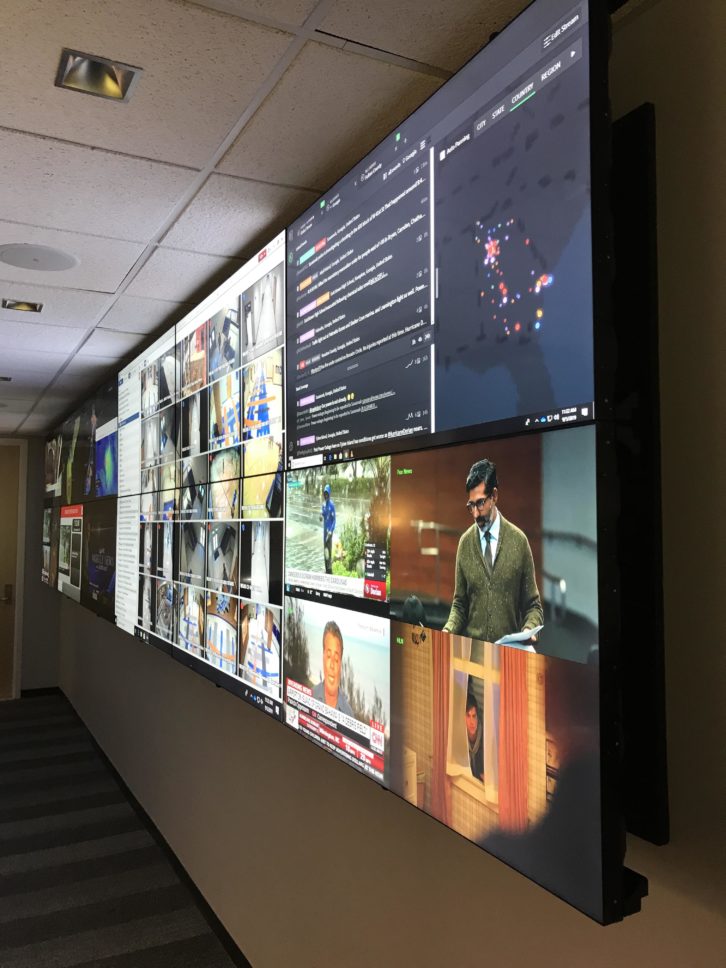 Yeah, it’s super easy. It’s just a PC-based software. You can pull it up on your computer just like any other software and essentially you have the displays, the inputs and outputs right there, and it’s literally just drag and drop. They have so many different inputs and outputs to choose from it can look a little bit complicated when you see it, but the user interface is actually quite nice and you can actually set some presets. Once they got into the mix of things and found configurations they liked or used a lot, we went to set presets. We peeled back the layers of the onion on this one—we found more ways to customize the software and solution for them.
Yeah, it’s super easy. It’s just a PC-based software. You can pull it up on your computer just like any other software and essentially you have the displays, the inputs and outputs right there, and it’s literally just drag and drop. They have so many different inputs and outputs to choose from it can look a little bit complicated when you see it, but the user interface is actually quite nice and you can actually set some presets. Once they got into the mix of things and found configurations they liked or used a lot, we went to set presets. We peeled back the layers of the onion on this one—we found more ways to customize the software and solution for them.
What kinds of sources are they looking at? There would be a lot of surveillance cameras and so forth, but I would think there are plenty of other sources, too.
They have a very sophisticated IP-based camera system. We were not involved with that specific piece, but the software they’re able to pull up through our system lets them select any camera across all their campuses to view either live or as recorded. Then on top of that, they have different weather feeds. They have different live news feeds and things like that so they can monitor not only what’s going on in the district but in the world, in the country. So they can be prepared for just about anything and everything. That’s really the beauty of the system. They have so much content and information they need to see at one time, so we made this 2 x 6 wall with 12 monitors. Now they’re able to display all kinds of content at any time and change it up at any time.
The video receivers and transmitters are from Just Add Power. They’re PoE, I believe, with a built-in video scaler, so that simplifies the installation. I think they can be controlled through RS232 or by infrared?
They can be. We’ve got RS232 going to each display monitor so they can essentially power on and power off the entire system. With the touch of a button, they can turn on all the displays and kick on all the receivers and transmitters and they’re ready to display content almost immediately.
You also interfaced the phone system with that MediaSwitcher setup didn’t you?
We did, yeah. We utilized their existing Biamp DSP, which has a voiceover-IP interface on it. We were able to bring that in and we customized the dialer on the Just Add Software MediaSwitcher program so they can dial out and receive calls in. They have microphones in that room and they have speakers, so they have two-way voice communication in and outside the room. Now they’ve adopted Microsoft Teams so they can integrate with that system as well.
You mentioned the weather inputs. That’s one type of emergency that we’ve had quite a few of here in Georgia lately. I don’t remember a springtime that has been so active and we’ve had so much bad weather. That’s definitely a concern and a situation that can come up on very short notice with tornadoes coming at you.
That’s right. That’s right. And pretty much that’s the beauty of this system. They can monitor all of that at the same time. I keep in touch with Paul Hildreth, who runs that operation center there, and there have been several incidents. They’ve had a water main break somewhere that they had to monitor. So they can immediately rectify those situations when they arise. They’ve also got a place all the top officials can come together and see what’s going on. So it really is like an emergency operations center; really a command center-type atmosphere. When you walk in that room that’s the feel you get.
You didn’t have to worry about the pandemic when you installed it, but have you been back since?
Yes, I have been back. The EOC is on the 6th floor of the main admin building so it’s a large facility. All the departments for the whole district meet there and the superintendent’s office is there. I’ve been back there to turn in some RFPs, but they’re pretty much limited operational at this point in time. People are working from home and the Emergency Operations Center currently is not being utilized on site. We do have it set up where they can remote into it if they needed to. But currently there’s no one physically there in the EOC.
I would guess at this point you’re just watching the governor’s office to see what’s going to happen with the schools. When they do get the official go-ahead I would think that it’s going to get real busy real fast.
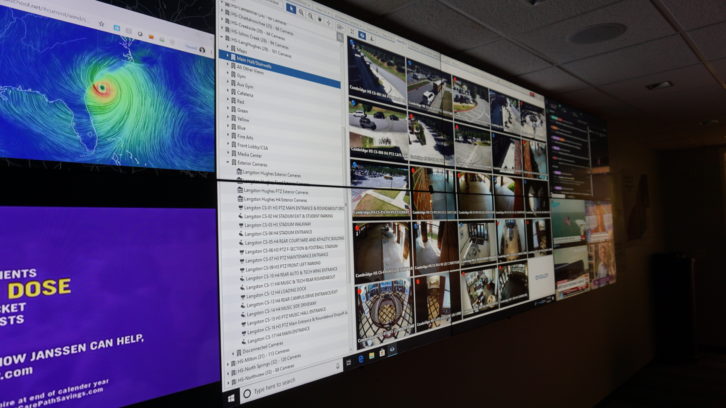 Yeah, it is. I mean the summer for us is always a little bit different. Obviously a heavy project installation period. There\ are no students in the building, there’s limited faculty, and so we’re just kind of getting a jump start on the summer early this year because of the virus. When school does open back up, and we’re pretty confident of that in the fall, we shift into this training operation mode where we go in and train all of our customers on the new installations and projects that we’ve done over the summer. We’re scheduling training sessions, multiple a day, making sure that they know how to use their system.
Yeah, it is. I mean the summer for us is always a little bit different. Obviously a heavy project installation period. There\ are no students in the building, there’s limited faculty, and so we’re just kind of getting a jump start on the summer early this year because of the virus. When school does open back up, and we’re pretty confident of that in the fall, we shift into this training operation mode where we go in and train all of our customers on the new installations and projects that we’ve done over the summer. We’re scheduling training sessions, multiple a day, making sure that they know how to use their system.
Stock up on the hand sanitizer.
That’s right. That’s right.
How do you think over the long term, this is going to affect AV integrators? It’s going to have a dramatic influence but I’m not sure that anybody knows for sure what it’s going to be.
Yeah. I mean, it’s certainly going to create some innovation. It’s going to create some pivots in the markets. Potentially other integrators may look to new markets to pivot their strategies. We’re staying strong and we’re staying the course. We’re very blessed to be in the education market sector. I was talking with a sales manager the other day from LG, about education and how foundational it is to our country. We feel very confident and strong that the schools will come back in session and things will get back to normal there. So we’re just very blessed. We’ve been in business 52 years and education has been our core market and that’s not going to change for us. It remains our most pressing and pivotal market. We’re going to dig in even deeper there because we feel that that’s really where our value is.
I think it’s going to change the way the school systems operate quite a bit. Just as with private companies, there will be a lot more video conferencing, virtual meetings and distance learning even after things get back more to normal.
Yeah, sure. I mean, I can foresee that, absolutely. We were already gearing towards that. We do a lot of training rooms and things like that, so it’s very simple to add a video conferencing layer. We still see a need for those spaces to be outfitted properly and accordingly. I think with the addition of the software and soft codecs that allow for video conferencing, you can do so much. We just installed a culinary system in Fulton County that will give the instructor the ability to provide live demos either onsite or offsite livestreaming. Those kind of applications will be more pressing and I think there will be more need for them. I think the question will become ‘hey, if we’re not physically here in this location or the students aren’t physically here, how do we get that information out to them?’ I think that’s going to be a question that sits at the forefront of our projects versus on the back end.




